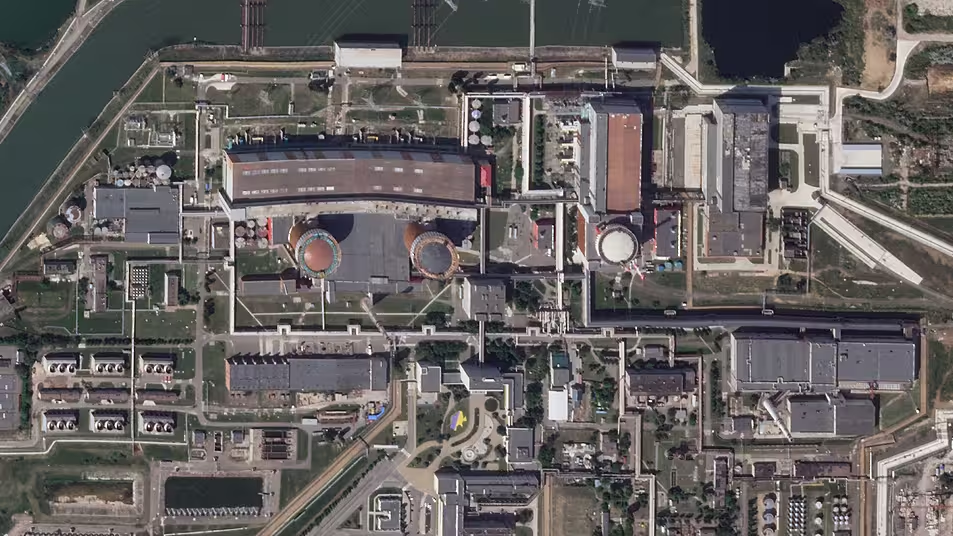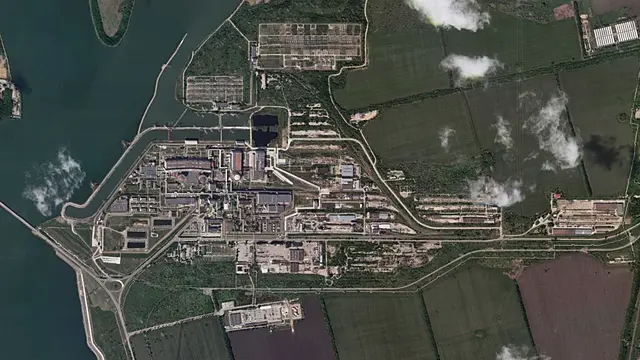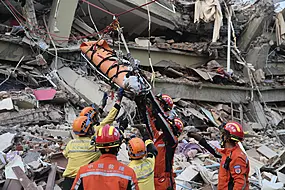A Russian missile struck close to a nuclear power plant in southern Ukraine without damaging the three reactors but hit other industrial equipment in what Ukrainian authorities denounced on Monday as an act of “nuclear terrorism”.
The strike followed warnings from Russian President Vladimir Putin of possible stepped-up attacks on key Ukrainian infrastructure after his forces suffered humiliating battlefield setbacks.
The missile struck 300 metres (328 yards) from the Pivdennoukrainsk nuclear plant, also known as the South Ukraine Nuclear Power Plant, according to Ukrainian nuclear operator Energoatom.
Black-and-white CCTV footage released by Ukraine’s Ministry of Defence showed two large fireballs erupting one after the other in the dark, followed by incandescent showers of sparks. A time stamp on the video read 19 minutes after midnight.
The ministry and Energoatom both called the strike “nuclear terrorism”.
The Russian Defence Ministry had no immediate comment.

The International Atomic Energy Agency said a main transmission line was reconnected on Friday, providing electricity that the Zaporizhzhia plant needs to cool its reactors. The IAEA has monitors at the plant.
While warning on Friday of possible ramped-up strikes on Ukrainian infrastructure, Mr Putin claimed that his forces had so far acted with restraint in reacting to Ukrainian attempts to hit Russian facilities.
“If the situation develops this way, our response will be more serious,” Mr Putin said.
“Just recently, the Russian armed forces have delivered a couple of impactful strikes,” he said, referring to attacks last week.
“Let’s consider those as warning strikes.”

As well as infrastructure, Russian forces also continue to pound other sites.
The latest shelling killed at least eight civilians and wounded 22 others, Ukraine’s presidential office said on Monday.
Overnight, Russian forces struck a pair of cities located across the Dniper River from the Zaporizhzhia plant, damaging dozens of buildings and cutting power supplies to some sections of Nikopol and Marhanets, the presidential office said.
In the village of Strilecha in the north-eastern Kharkiv region, Russian shelling killed four medical workers who were trying to evacuate patients from a psychiatric hospital, and wounded two patients, Kharkiv Governor Oleh Syniehubov said.
Russian strikes also hit Kramatorsk and Toretsk in the eastern Donetsk region, according to the presidential office.
Energoatom said the blast from Monday’s missile strike broke more than 100 windows at the industrial complex that includes the Pivdennoukrainsk plant.
It also caused the temporary shutdown of a nearby hydropower plant, it said.
Ukraine’s presidential office said the attack also severed three power transmission lines.
The plant sits along the Southern Bug River in the southern Mykolaiv region, about 300km (190 miles) south of the capital, Kyiv.
Patricia Lewis, the international security research director at the Chatham House think-tank in London, said the attacks at the Zaporizhzhia plant and Monday’s strike point to a pattern of Russian military planners attempting to take Ukrainian nuclear plants offline before winter by targeting power supplies that keep them functioning safely.
“It’s a very, very dangerous and illegal act to be targeting a nuclear station,” Dr Lewis said in an interview. “Only the generals will know the intent, but there’s clearly a pattern.”
“What they seem to be doing each time is to try to cut off the power to the reactor,” she said. “It’s a very clumsy way to do it, because how accurate are these missiles?”
Other recent Russian strikes on Ukrainian infrastructure targeted power plants in the north and a dam in the south. They came in the wake of a sweeping Ukrainian counterattack in the east of the country that has pummelled Russian forces, reclaiming a large swath of previously occupied territory in the Kharkiv region and breaking what had largely become a stalemate in the war.







